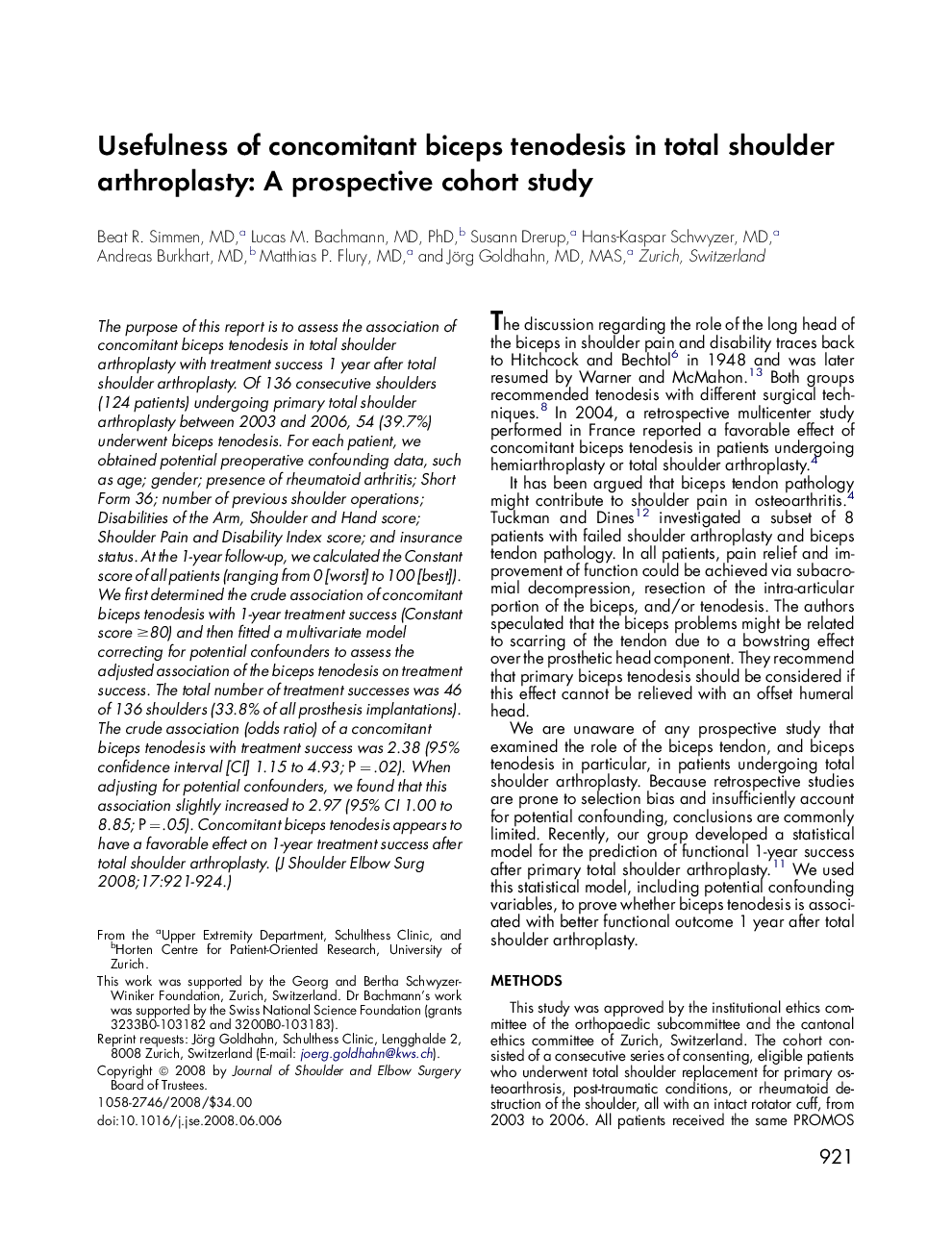| Article ID | Journal | Published Year | Pages | File Type |
|---|---|---|---|---|
| 4074734 | Journal of Shoulder and Elbow Surgery | 2008 | 4 Pages |
Abstract
The purpose of this report is to assess the association of concomitant biceps tenodesis in total shoulder arthroplasty with treatment success 1 year after total shoulder arthroplasty. Of 136 consecutive shoulders (124 patients) undergoing primary total shoulder arthroplasty between 2003 and 2006, 54 (39.7%) underwent biceps tenodesis. For each patient, we obtained potential preoperative confounding data, such as age; gender; presence of rheumatoid arthritis; Short Form 36; number of previous shoulder operations; Disabilities of the Arm, Shoulder and Hand score; Shoulder Pain and Disability Index score; and insurance status. At the 1-year follow-up, we calculated the Constant score of all patients (ranging from 0 [worst] to 100 [best]). We first determined the crude association of concomitant biceps tenodesis with 1-year treatment success (Constant score â¥80) and then fitted a multivariate model correcting for potential confounders to assess the adjusted association of the biceps tenodesis on treatment success. The total number of treatment successes was 46 of 136 shoulders (33.8% of all prosthesis implantations). The crude association (odds ratio) of a concomitant biceps tenodesis with treatment success was 2.38 (95% confidence interval [CI] 1.15 to 4.93; P = .02). When adjusting for potential confounders, we found that this association slightly increased to 2.97 (95% CI 1.00 to 8.85; P = .05). Concomitant biceps tenodesis appears to have a favorable effect on 1-year treatment success after total shoulder arthroplasty.
Related Topics
Health Sciences
Medicine and Dentistry
Orthopedics, Sports Medicine and Rehabilitation
Authors
Beat R. MD, Lucas M. MD, PhD, Susann Drerup, Hans-Kaspar MD, Andreas MD, Matthias P. MD, Jörg MD, MAS,
